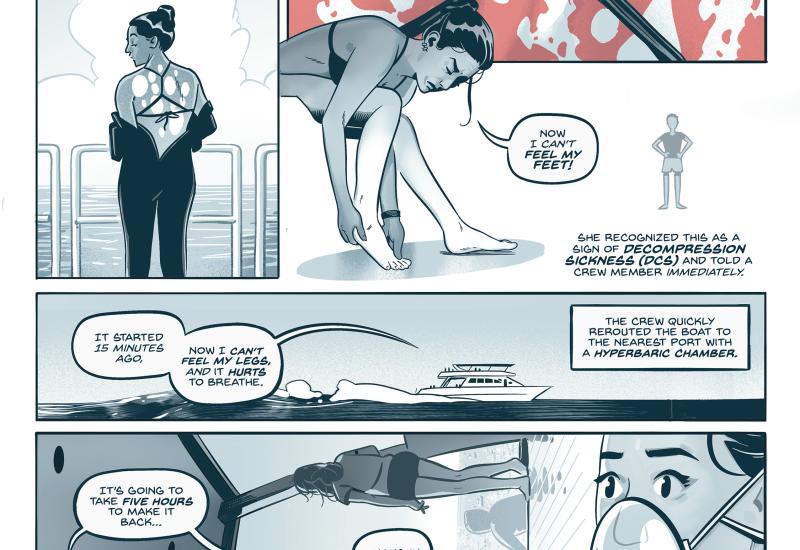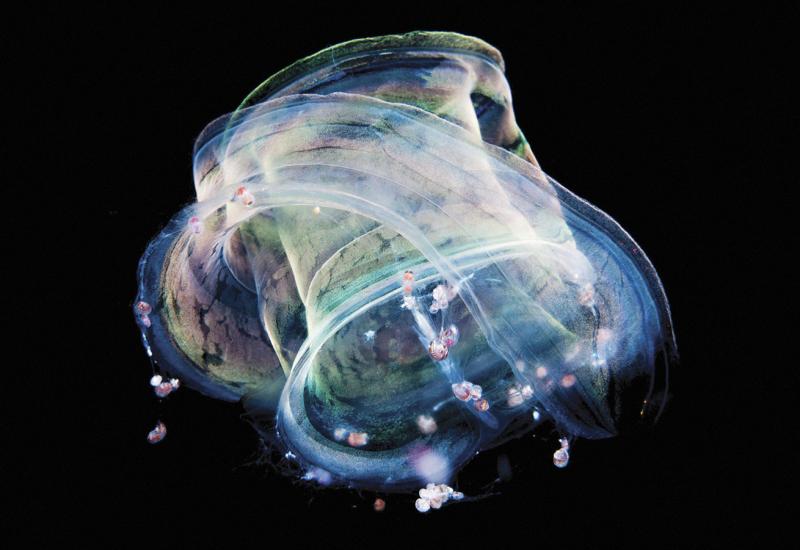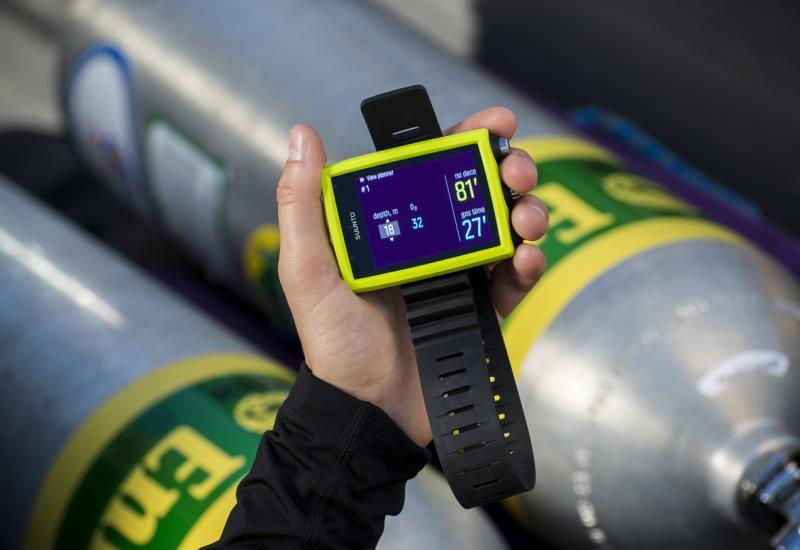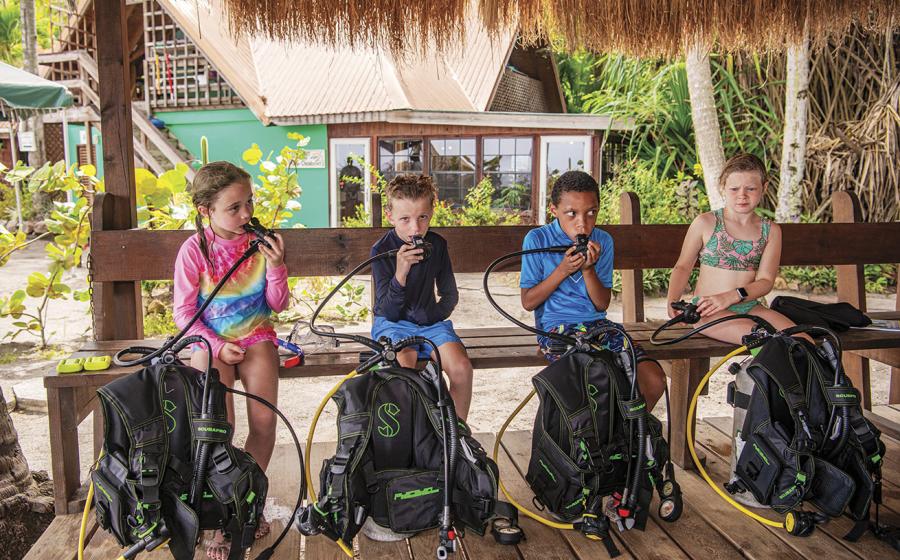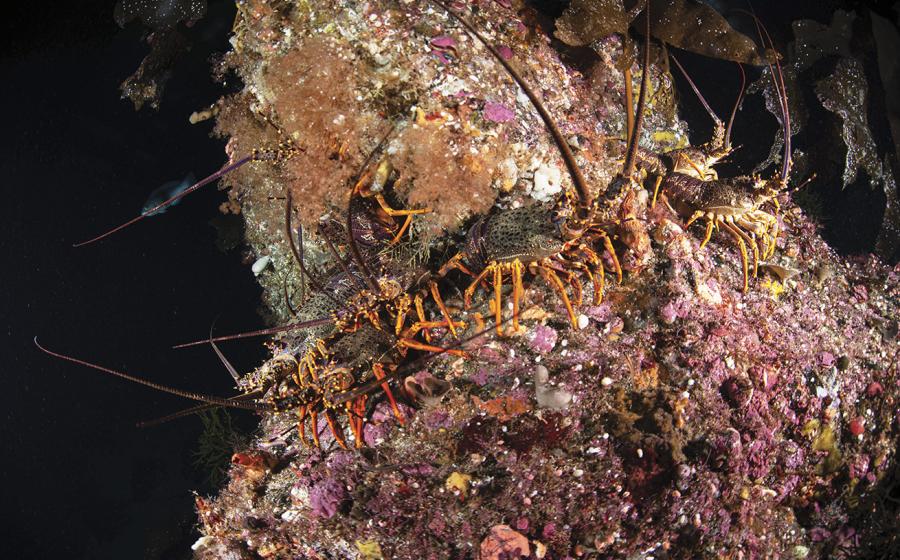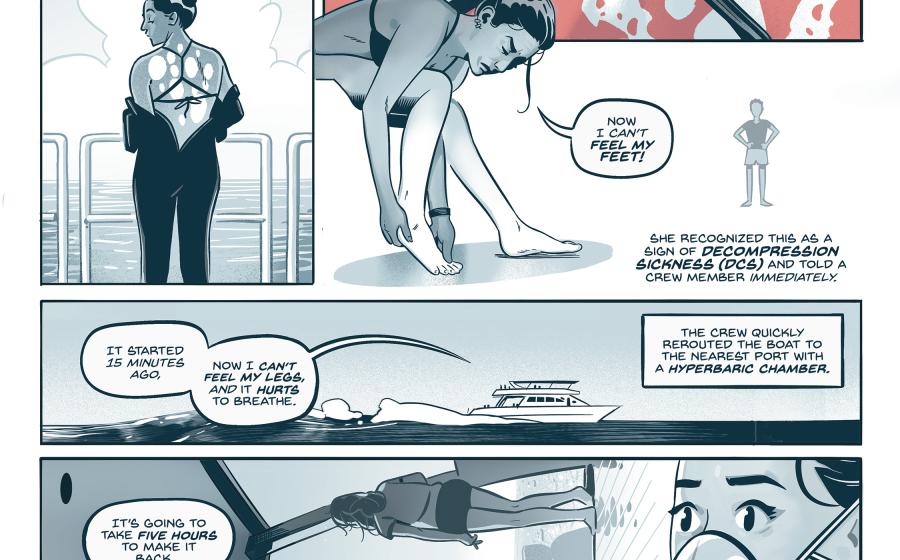How to Master Underwater Navigation and Dive Like a Pro
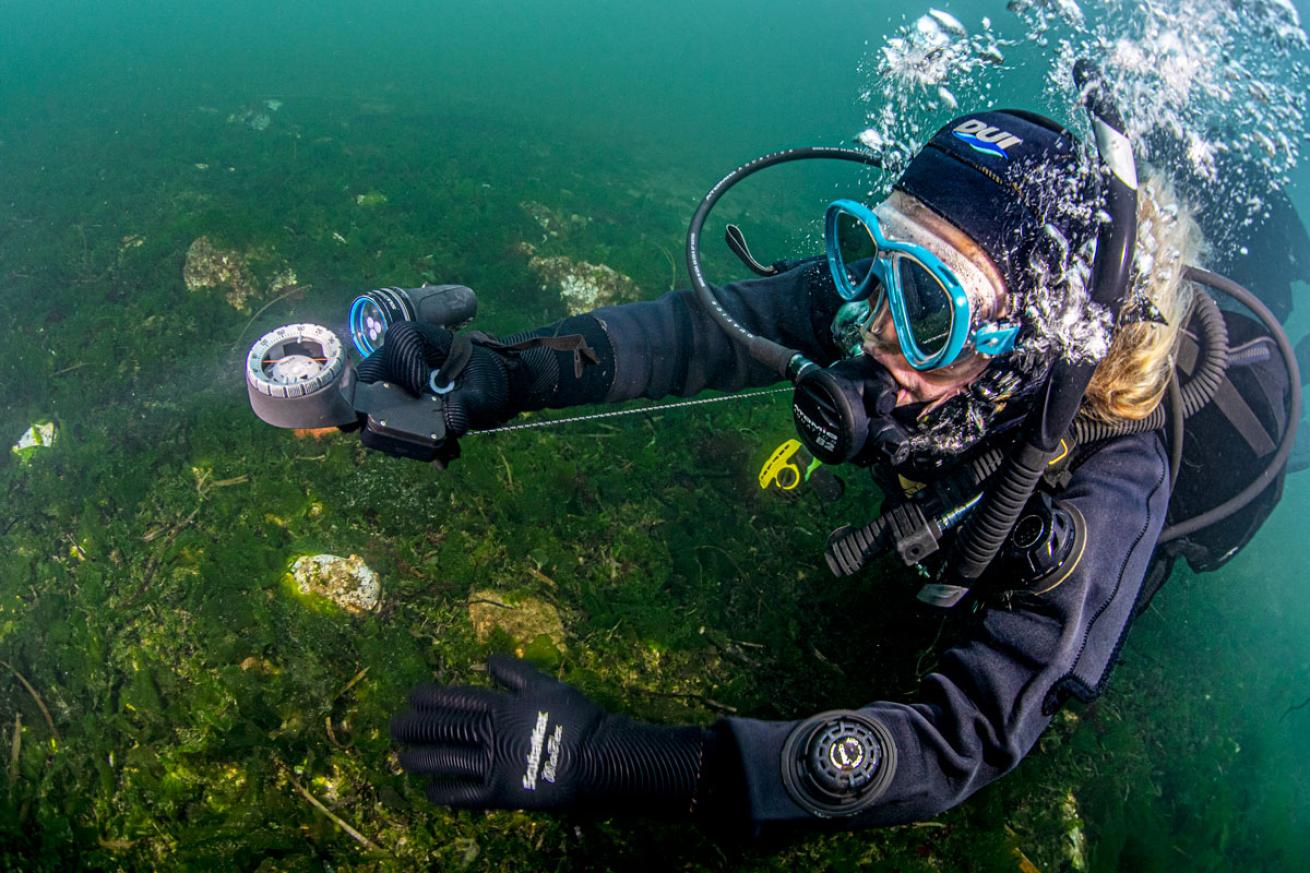
Courtesy of Annie CrawleyA diver practices underwater navigation with a compass.
Let’s get this on the record: We all get lost. Whether on land or underwater, getting lost is an integral part of learning. When I learned to drive a car, I used paper maps to find my location. Getting lost was inevitable, and to compensate, I relied on a co-pilot and knew when to stop and reorient or ask for directions. The same principles apply to diving. When learning to navigate, take it slow while building confidence. The more you dive using successful navigation, the more comfortable and confident you’ll become while seeking out new adventures.
The Gear
You will need a compass to get started. There are many on the market, and they are not all created equal. There are standalone analog compasses and computers with built-in compasses. Both operate on the same basic principles. Whichever you choose, become proficient with it on land before entering the water.
An analog compass has a free-floating needle pointing to magnetic north. No matter where you turn your body, this needle will point north, unless you are near a large amount of metal—like on a shipwreck—or inside of a cave. Note that if you’re using a digital compass and travel overseas, you may need to recalibrate it to the new location before diving and set the declination. Download the instructions for this step and keep them on your phone in case you need to do it on the fly before diving.
The lubber line, or orientation line, symbolizes your direction of travel. The rotating bezel allows you to set a heading and easily read your reciprocal (read: return) course. Regardless of the model you use, you must hold your compass in the center of your body, and level to get an accurate reading.
See also: How to Use an Underwater Compass
Putting It Into Practice
Like all dive skills, navigation is easy when you are comfortable in the environment and understand how natural and compass navigation work together. For any underwater navigation, you will use a combination of compass and natural navigation.
Before you hit the water, research the site online. Look up tide charts, weather and the swell report. Practice walking your plan out on shore before hitting the water by following the compass heading you intend to use.
You can reference an advanced open-water course online manual for step-by-step compass navigation instructions. Putting these instructions into practice during your dives is an important skill. Let’s use the example of Edmonds Underwater Park, a popular 27-acre marine preserve in the Pacific Northwest.
At this site, enter from the inner side of the breakwater and surface-kick out to the edge of the jetty. Set your compass heading to 330 degrees from the south end of the jetty. As you descend, you will use natural navigation—points of reference in the natural environment that give you navigational clues—and your compass to swim diagonally through the sand and eel grass beds to hit the underwater trail system that runs west (270 degrees) to deep water and east (90 degrees) toward shore.
The eel grass beds are at a depth of 15 feet at high tide. Depth is a helpful natural navigation tool used to find your starting location or other points of interest. Intersecting trails run parallel to shore, north (0/360 degrees) and south (180 degrees). At any point in time, if you get lost, a heading of 90 degrees will bring you back to shore. Avoid heading south as the ferry is a hazard. If you wander off the trails, remember the four cardinal points of the compass will take you back to one of the trails. Although the park is large, you will choose one area to explore. Draw your dive on a dive slate and leave the underside blank so you can communicate with your buddy during the dive. In winter and fall, when there is less vegetation, it’s easier to learn how to navigate. During summer, the kelp and algae explode; visibility can drop, causing more difficult navigation.
You can use similar thought patterns employed here to plan out your next adventure to your favorite local dive site.
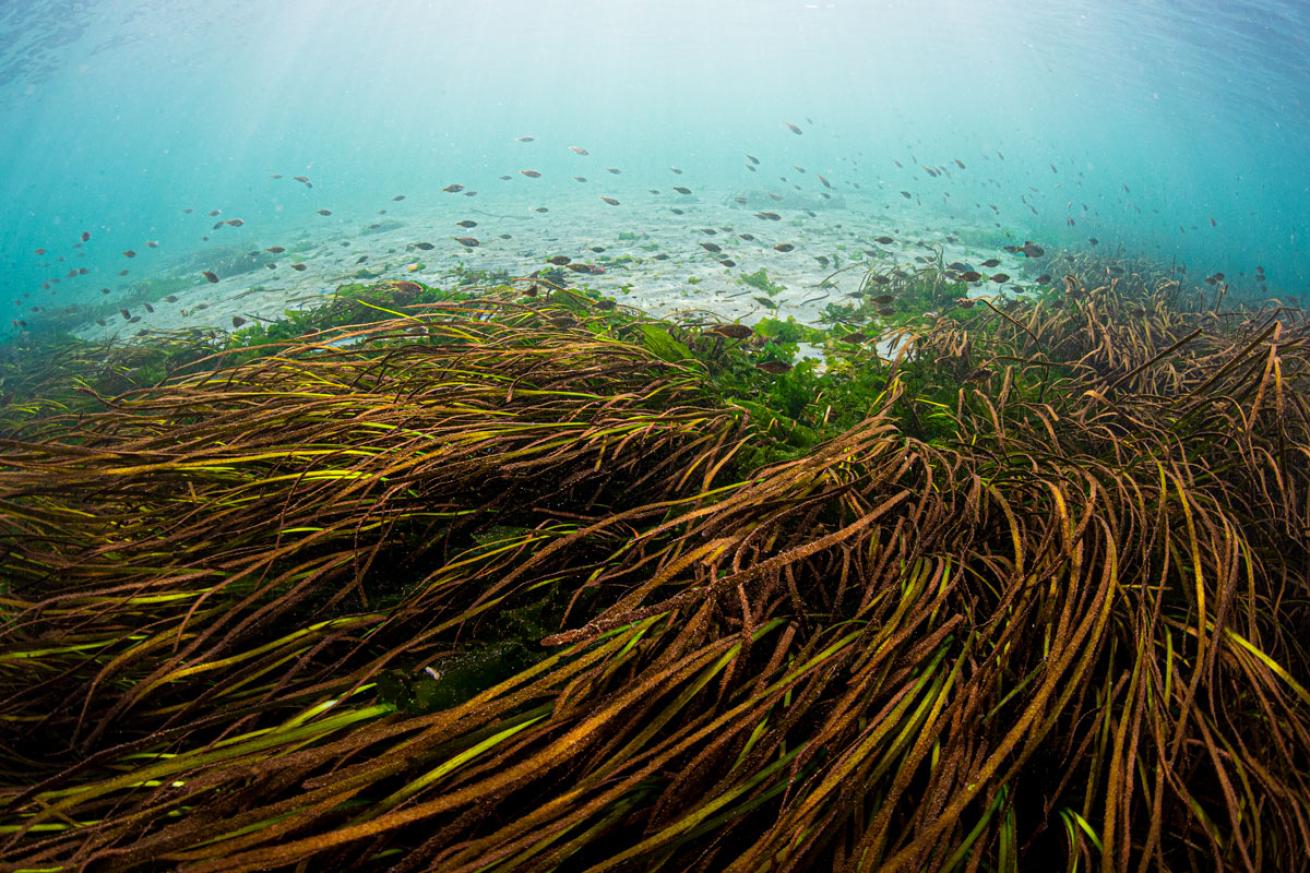
Courtesy of Annie CrawleyStationary underwater features, such as sea grass beds, distinctive coral heads, man-made objects or boulders, can be used as natural navigation clues.
Navigation for Every Dive
Navigating confidently becomes even more important in low-visibility conditions. When diving in 50 to 100 feet of viz, it’s much easier to rely on natural navigation and less on your compass. But it’s important to be able to handle any situation as local conditions vary. If you plan on shore diving or choose to opt out of using a guide, take a local discover dive with a professional to help you understand key compass headings as well as natural points of reference before venturing out.
On land, you can work toward becoming a better navigator by memorizing the cardinal points and their corresponding degree headings. The more you practice on land, the easier it is underwater.
Always carry safety equipment necessary for diving conditions in case you get lost or need to abort your dive. This includes a surface marker buoy, dive slate, GPS location device and auditory signaling device. Before descending, know the compass heading that will take you back to the shore or boat. Create a plan in case you or your buddy get lost or separated, and review your emergency action plan before getting in the water.
If you are using a diver propulsion vehicle, purchase a kayak compass and strap it onto the front of your device, where it is visible during use.
Pro Tip: You may feel like you aren’t good at navigation because of bad experiences in the past, but you can overcome them. Nobody is bad at navigation; it is a skill that needs to be developed. If you experience a personal block in navigating underwater, find an instructor to coach you to take back your power and confidence through a PADI Underwater Navigator course.

